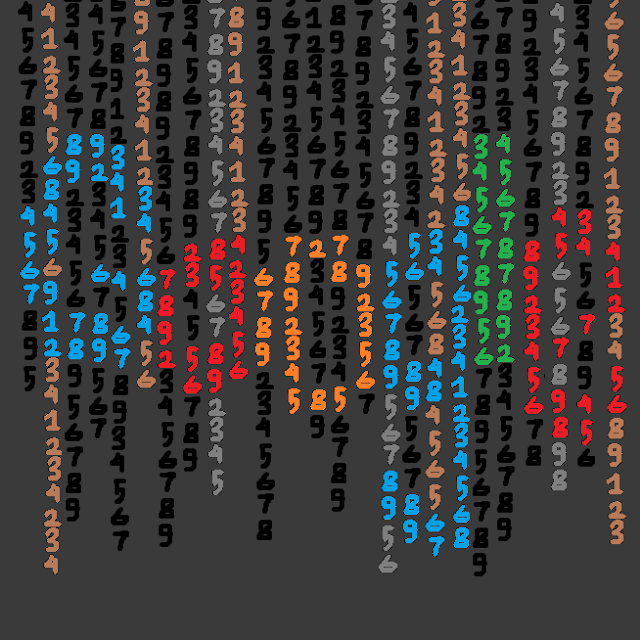AI Image Generator Platforms - The Future of Visual Creativity Is Here - Blog No. 58
Imagine this: you're a designer with a tight deadline. You need a futuristic cityscape for a tech magazine cover, but none of the stock images work. You don’t have time to hire an illustrator. You type a simple prompt—"neon-lit cyberpunk city at night"—and within seconds, a vivid, high-resolution image appears. It’s original, stunning, and exactly what you envisioned. Welcome to the world of AI image generator platforms.
These platforms are reshaping how we think about visual content creation. From artists and designers to marketers and entrepreneurs, AI-generated images are unlocking new levels of creativity and efficiency. In this blog, we’ll take a deep dive into what AI image generators are, how they work, their most popular platforms, real-world applications, and what the future holds.
Related
What Is an AI Image Generator Platform?
An AI image generator platform is a tool powered by artificial intelligence, often using deep learning models like GANs (Generative Adversarial Networks) or diffusion models, to create images based on text prompts. These tools can transform words into visuals, letting users generate art, photos, illustrations, and even concept designs with ease.
They’re more than just gimmicks—they're becoming indispensable in industries where speed, originality, and visual storytelling matter.
The Story Behind the Rise: How We Got Here
Just a few years ago, generating images with AI seemed like a far-fetched dream. In the early 2010s, deep learning breakthroughs like convolutional neural networks revolutionized image recognition. But generation? That was uncharted territory.
The turning point came with the introduction of GANs by Ian Goodfellow in 2014. These networks pit two AIs against each other—one trying to create, the other trying to detect fakes—leading to startlingly realistic outputs. Later, diffusion models, like those behind DALL·E 2 and Stable Diffusion, elevated things further by simulating the way images form, pixel by pixel, from noise.
As these technologies matured, companies began building platforms around them. OpenAI, Midjourney, Stability AI, and Adobe all joined the race to commercialize image generation tools, making them user-friendly and accessible to the masses.
Popular AI Image Generator Platforms in 2025
Let's look at some of the top AI image generators that have taken the world by storm:
1. DALL·E 3 (OpenAI)
DALL·E 3, built by the creators of ChatGPT, offers remarkably accurate and imaginative image generation. It understands complex prompts and creates polished, high-resolution visuals. Its tight integration with other OpenAI tools makes it a favorite among marketers and creatives alike.
SEO Keywords: DALL·E 3 features, OpenAI image generator, text-to-image AI
2. Midjourney
Midjourney has carved out a niche for its unique, artistic flair. Used primarily through Discord, it has built a cult following among digital artists and NFT creators. The images are often stylized, dreamlike, and perfect for fantasy or conceptual art.
SEO Keywords: Midjourney AI art, Discord image generator, AI artwork platform
3. Stable Diffusion (Stability AI)
Stable Diffusion is known for being open-source, giving users and developers complete control over customization. With a vast community and regular updates, it’s ideal for those who want flexibility and freedom in their image generation.
SEO Keywords: open source AI image generator, Stable Diffusion tutorial, custom AI image models
4. Adobe Firefly
Adobe’s foray into AI image generation is tailored for creative professionals. Firefly integrates seamlessly with Photoshop and Illustrator, offering generative fills, backgrounds, and typography features.
SEO Keywords: Adobe Firefly AI, Photoshop AI generator, creative suite image AI
How AI Image Generators Work (Without the Geek Speak)
Let’s break down the magic in simple terms:
-
You provide a text prompt.
-
Example: “A steampunk airship floating above a futuristic city at sunset.”
-
-
The AI interprets your words.
-
It maps the text to concepts it’s learned from millions of image-text pairs.
-
-
It generates a visual.
-
Using algorithms like diffusion, the image emerges from noise, gradually forming the final artwork.
-
-
You get options to refine or upscale.
-
Most platforms allow tweaks—changing styles, resolutions, or even individual elements.
It’s like talking to an invisible artist who works 100x faster than any human—and doesn’t charge by the hour.
Real-World Applications: Who’s Using AI Image Generators?
The versatility of AI image generators is staggering. Here’s how different industries are tapping into them:
1. Marketing and Advertising
Need a unique product mockup or banner ad? AI images reduce the dependency on stock photos and expensive photoshoots.
Example: A startup can create a full campaign of lifestyle images for a new gadget—without hiring a photographer.
2. Content Creation and Blogging
Bloggers and content marketers use AI images to spice up their posts with customized visuals that match their brand voice.
Example: An SEO writer wants an image of “a robot meditating in a zen garden”—easy with AI, impossible with stock.
3. Game and App Development
Concept artists now use AI to visualize characters, worlds, and assets, speeding up prototyping and ideation.
Example: A game dev quickly generates 10 versions of a desert outpost to finalize level design ideas.
4. Education and E-learning
Teachers and educators generate custom illustrations for presentations, learning modules, or explainer videos.
Example: A biology teacher creates a stylized image of a cell city with anthropomorphic organelles.
5. Fashion and Interior Design
Designers test color palettes, patterns, and room layouts using AI visuals before creating real-world samples.
Example: An interior designer mockups a living room in “Japanese-Scandinavian fusion style” within minutes.
SEO Tips for Using AI Images in Your Content
Using AI-generated images isn’t just about aesthetics—it can boost your SEO too. Here’s how:
-
Optimize Alt Text: Use keyword-rich descriptions for accessibility and search visibility.
-
Compress Without Losing Quality: Faster load times = better rankings.
-
Use Descriptive Filenames: Name your file something like
ai-generated-steampunk-airship.jpg. -
Surround With Contextual Text: Add relevant captions and surrounding keywords.
-
Avoid Overusing: Mix with real photos to maintain authenticity, especially in product pages.
Ethical Concerns and Limitations
While AI image generators are groundbreaking, they’re not without issues:
1. Bias and Stereotypes
If the training data is biased, the output might reflect those biases—such as gender or racial stereotypes.
2. Copyright Infringement
Some platforms have been criticized for scraping copyrighted artwork without permission. That’s why attribution, consent, and transparency matter.
3. Job Displacement
There's concern among illustrators and stock photographers that AI could replace traditional roles.
Pro Tip: Use AI ethically. Credit original creators if your image is based on an artist’s style, and be transparent when using AI in professional work.
The Future of AI Image Generator Platforms
What does the future hold? Expect these trends:
1. More Interactivity
Future platforms will allow users to edit images in real-time via voice or text commands—turning static prompts into living, iterative design sessions.
2. 3D and Motion Integration
From 2D to 3D modeling and animations, AI will bridge the gap between static visuals and immersive content.
3. Hyper-Personalization
AI tools will learn your brand’s aesthetic and auto-generate images that match your style guide perfectly.
4. Legal Frameworks
Expect clearer copyright laws, ethical guidelines, and watermarks to help regulate AI-generated content responsibly.
Related
Final Thoughts: Embrace the New Creative Frontier
AI image generator platforms are not here to replace creativity—they’re here to amplify it. They remove technical barriers, ignite imagination, and empower anyone to bring their ideas to life visually, no matter their skill level.
Whether you’re a solo creator, a business owner, or part of a creative agency, now is the time to explore what AI can do for your visuals. The tools are evolving fast—and those who adapt early will gain a powerful edge.
So, next time you need a splash of creativity, don’t just reach for stock libraries. Try typing your vision into an AI image generator platform. You might be surprised by what appears on your screen.
Keywords Recap for SEO Optimization:
AI image generator platform, AI image creation tools, DALL·E 3, Midjourney, Stable Diffusion, Adobe Firefly, text-to-image AI, best AI art generators, AI-generated images, how AI image generation works, real-world use of AI art, AI image ethics, future of AI visuals.



Comments
Post a Comment